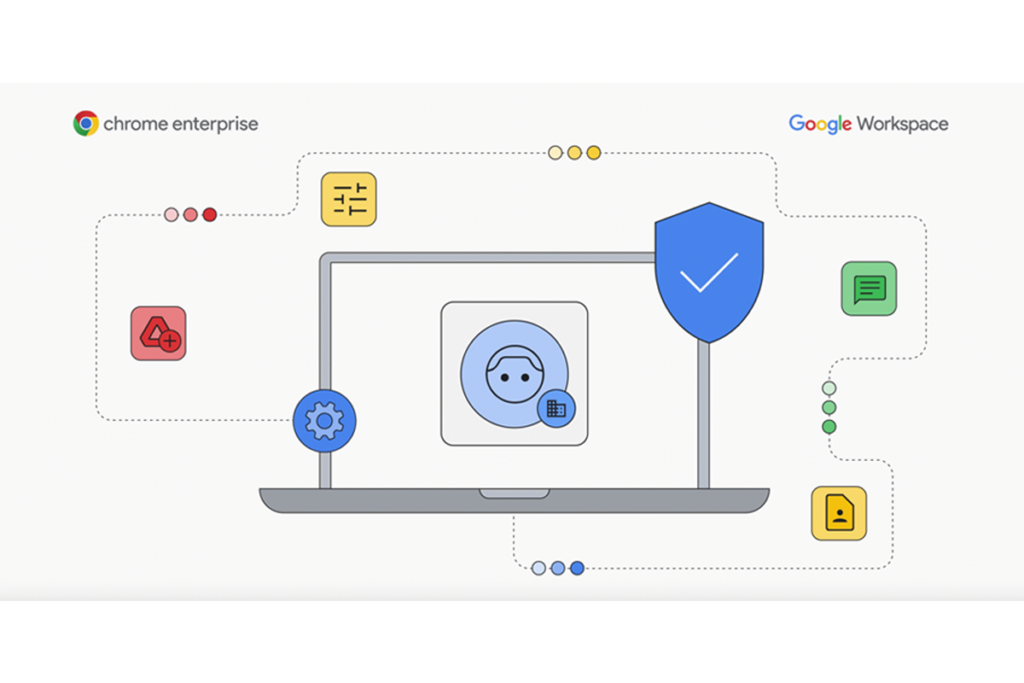Article
The executive’s guide to keeping data safe in the AI era

In the AI era, safeguarding your organization’s data is more critical than ever. Here’s what executives need to know.
The future of data is closer than you think. In just a few years, organizations of all sizes will need technologies that can support “data ubiquity,” where data is embedded into systems, processes, channels, interactions, and decision points — and they’ll be relying on the cloud for help. As they move their data and applications out of on-premises data centers, they’ll have to understand how to keep data secure in the cloud, too.
Cloud data security operates on a different paradigm from on-premises data security. While some of the threats are the same, many are different, and organizations shouldn’t expect the same results if they lift-and-shift their threat models and security protocols. There are four essentials that executives should understand when making decisions about ensuring the safety of data in the cloud to drive improvement, resilience, and future growth.
1. Understand shared responsibility
Security in the cloud is a collaborative, mutually beneficial effort that requires you to work closely with your cloud provider, and one that Google Cloud take seriously. Our shared fate approach emphasizes ongoing partnership, with providers offering proactive guidance and sharing their cloud expertise to assist organizations with implementing best practices and continuously improve security for better outcomes.
To effectively keep data safe in the cloud, it’s critical to fully understand your organization’s security responsibilities to avoid any erroneous security presumptions that can increase risk. It’s helpful to clearly define the types of workloads you will host, any regulatory requirements you must comply with, and the related security controls that are available. In addition, you should get familiar with any resources provided to help ensure your configuration is secure from the start, such as recommended security controls, best practices, and security blueprints.
2.Build security into your data platform
Protecting data in the cloud requires “defense in depth” — multiple layers of safeguards that minimize risk and protect against a variety of external and internal threats. If one fails, other layers are there to provide additional defenses to protect your assets. Effective data security should be built directly into cloud data platforms from the ground up, not bolted on later.
Implementing a unified data platform that provides platform-level capabilities to protect the data it stores, processes, and manages can help to fortify data at every level. Some of the most common examples of features to consider include:
Access management controls: Fine-grained access controls deliver precise management of who can access data resources and what actions they can perform, helping to provide the right people with the right access to data while minimizing risks.
Data encryption: Encryption protects sensitive data throughout its entire lifecycle — whether it’s being stored, during use, or moving from one place to another. For example, a platform that provides default encryption for stored or backed up data can automatically encrypt data for you, without any additional steps on your part, making it easier to protect data from attackers.
Data masking: These techniques modify sensitive or critical data so that it has little or no value for unauthorized use while providing a realistic, functional version that can still be accessed and used for other purposes, such as software testing or sales demos.
Governance policy management: Comprehensive tools to define, implement, enforce, and monitor governance policies that maintain compliance across data quality, security, integrity, and more.
Together, these capabilities can pave the way for a secure path to using cloud data effectively, empowering you to become more agile and pursue new opportunities while protecting your most critical data assets.
3.Set up automated security guardrails
Automated controls and pre-set rules also play a crucial role in protecting and fortifying your data in cloud environments, helping to set clear boundaries without limiting agility or innovation.
In practice, security guardrails are implemented to:
- Restrict unauthorized access and actions: Identity and access management policies define granular controls about who can interact with specific data and resources, so only authorized users and services can perform designated actions.
- Prevent misconfigurations and vulnerabilities: Security guardrails can assist with identifying and preventing misconfigurations and vulnerabilities before they lead to compromise, helping to enforce best practices and compliance requirements that keep your data safe.
- Reduce the risks of data exfiltration: These policies and controls can establish rules that limit access or restrict data movement, minimizing the risk of data exfiltration or accidental transfer.
- Maintain centralized control: Organization policies define high-level rules and restrictions for resource usage and configurations across the entire cloud environment, fostering consistent security practices and regulatory compliance.
For example, granular identity and access management policies can help enforce the principle of least privilege — meaning services and users can only access the minimum resources they need to perform their job functions. If an employee tries to access data resources that go beyond their assigned permissions, a guardrail will automatically deny the request.
In contrast, an organization policy might be used to establish broader rules for data access and usage, such as preventing public access to a cloud storage bucket or denying access to data resources if an encryption key’s last rotation date exceeds a specific limit.
4. Monitor your data security continuously
Data security is a dynamic, ongoing process that requires constant vigilance and adaptation. Investing in platforms that provide a complete, real-time view of security posture and direct visibility into data systems and access patterns is critical for safeguarding your organization’s data. These capabilities enable proactive monitoring, allowing you to identify and address issues before they escalate into bigger problems, while upholding compliance and security mandates.
In addition, automating security operations, where feasible, can significantly enhance the speed and consistency of security response to potential incidents. Integrating advanced analytics and AI into these systems and tools can also further refine your organization’s ability to protect sensitive data in the cloud, allowing you to quickly identify hidden patterns or potential vulnerabilities, so you can evolve your strategies to meet emerging threats without delay.
Adopting comprehensive monitoring and services that simplify compliance can help your organization build a more robust and resilient data ecosystem, equipped to adapt quickly while adhering to stringent industry standards and regulatory requirements.
Getting your data ready for AI
Ultimately, data protection is now a strategic imperative for the AI era. Simply migrating data isn’t sufficient — you’ll also need to take steps to build robust data protection that considers the new paradigms of the cloud, so you can confidently embrace AI and maximize the value of your data.
Related News

How to build a strong brand logo with Imagen 3 and Gemini
See Detail
Boosting communication and collaboration for teams of all sizes in Google Workspace
See Detail
Chrome Enterprise Improves Management and Productivity Capabilities for Google Workspace users
See Detail